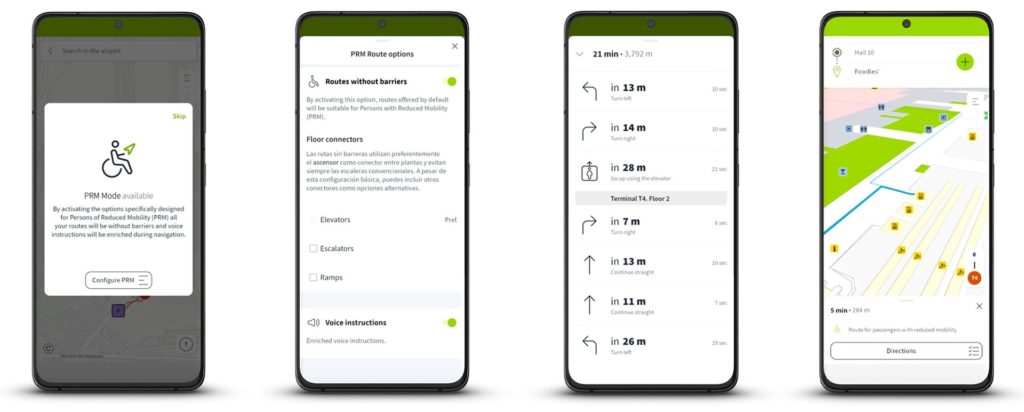Accessibility is crucial when developing and designing apps, especially navigation apps. Situm SDKs are flexible enough to allow developers to adapt their apps not only to the needs of the final product but also to the user’s different capabilities. Creating an accessible indoor navigation app is easy with Situm!
In this post, we are compiling the adaptations you can make to integrate indoor geolocation in apps considering users with some sort of disability.
What are Situm’s basic accessibility options?
Both the wayfinding module (which allows you to integrate navigation into other apps) and the mobile SDK (to create a fully customizable app) have two accessibility options:

- Voice guidance
In addition to displaying route instructions on the screen on the map and in textual form (turn right, go 50m forward, etc.), we can activate the voice guidance option to listen to them.
This option allows people with vision impairment to use the navigation simply by listening to the guidance instructions, rather than relying on the map visually.
- Alternative routes
The navigation system allows our clients, the managers of the space, to establish different routes adapted to the particular characteristics of the app users, both inside and outside the building.

The Situm Dashboard (the control panel from which to set up the routes for the user to follow) allows you to easily create alternative paths that avoid, for example, stairs, thus allowing the user the option to choose an accessible route.
What else can we do with Situm to develop a more accessible app?
Our SDK is so flexible and customizable that any developer can modify it to include them and increase the accessibility of their app. What else makes an indoor navigation app accessible?
- Talkback and VoiceOver
Talkback is Google’s screen reader that many visually impaired users use, and VoiceOver is its iOS version. These tools read aloud those elements of the screen over which the user swipes their finger, helping them to use the screen. Developers can add the relevant tags for Talkback/VoiceOver to recognize all elements of Situm’s navigation.
- High-contrast interface
In the same way that you can adapt the graphic elements such as colours, logos, or the appearance of the maps in the app, you can also create a high-contrast mode so that people with limited vision can use it more easily. This option can be developed for both the app interface and the maps.
- Voice navigation
At the beginning of this post, we mentioned voice instructions combined with visual instructions. However, you may want to allow the user to completely remove the visual elements and leave only the audible ones or those compatible with Talkback. With the Situm SDK, this is possible.
- Adaptation to other WCAG 2.2 visual guidelines
It is also possible to adapt apps with Situm navigation to other visual guidelines of WCAG 2.2 (Web Content Accessibility Guidelines, a set of accessibility guidelines published by the World Wide Web Consortium, the Internet’s leading standards organization):
- Zoom controls on texts.
- Appropriate sizing of all UI elements on the phone screen.
- Reducing the number of controls to the most relevant ones to minimize confusion.
- Voice recognition of essential controls and interface information.
- Indications to make it clear to the user that the mobile is to be used in portrait mode.
There is no doubt that accessibility is a crucial part of developing new applications and tools, especially those that have to do with indoor location and navigation so that everyone can use them. At Situm, we are committed to adaptability and flexibility, providing development packages that are flexible enough to be able to adapt our clients’ products to as many needs as possible.
